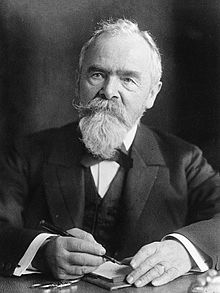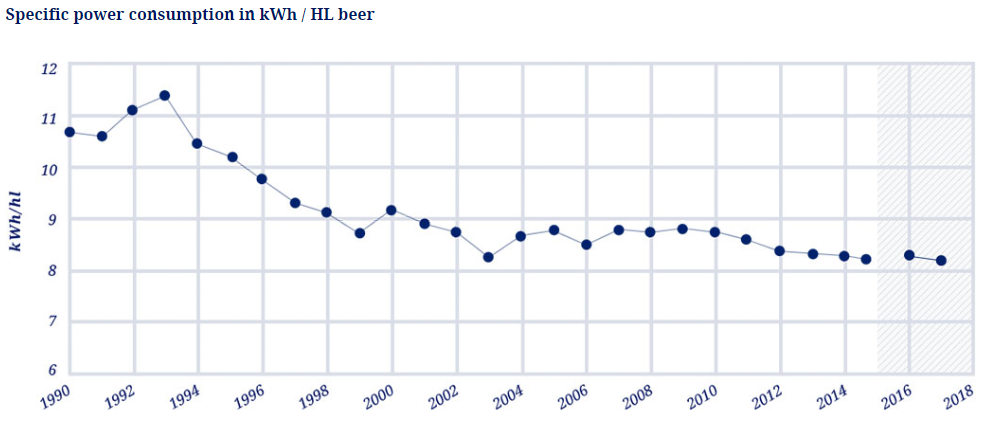40 Paulaner

Introduction
Paulaner is a German Brewery that was established in 1634 in Munich (Wikipedia, 2019). Today Paulaner is still based in Munich, Germany and is one in six breweries that supplies beer for Oktoberfest, it is also ranked six among Germanies best selling beers (Wikipedia, 2019). Paulaner’s motto is “Paulaner engagiert” which means “Paulaner is committed”. Paulaner prides themselves on being environmentally friendly, and always taking the long-term view (Paulaner, 2019).
Origins
Paulaner was established in 1634 by monks in the Minim friars of the Neudeck ob der Au Monastery in Munich. (Wikipedia, 2019) Before it was established the beer was made by monks under the Purity Law of 1516. Whatever the monks did not drink was given to the poor or it was sold in the cloister pub (Paulaner, 2019). In 1799 the Neudeck cloister was abolished and turned into a penitentiary (Wikipedia, 2019). A few years later in 1806 a man named Franz Xaver Zacherl purchased the old building and he modernized and expanded it creating a product named Salvator, which is Latin for saviour (Paulaner, 2019). In 1944 during the second world war the Paulaner brewery was destroyed by a bombing raid and was later rebuilt in 1950 (Paulaner, 2019). In 1989 the first Paulaner brew house was opened in Munich and is the headquarters of the Paulaner taverns. Today Paulaner is still very well known, they produce 2.3 million hectoliters of beer annually and are still one in six breweries that provide beer for Oktoberfest (Paulaner, 2019).

Key Milestones
- On February 24, 1634 civilian brewers voiced their complaints about competition from the monastery. This was the first documented evidence of the Paulaner Brewery and is used as the founding date of the brewery (Paulaner, 2019).
- In 1773 a monk names Valentin Stephan Still arrived at the Neubeck Monastery. His new techniques brought new standards for taste and quality for the beer, his recipe still forms the basis for Paulaner Salvator which is a type of beer made today(Paulaner, 2019).
- In 1806 Franz Xazer Zacherl bought the brewery after the abolition of the Neudeck cloister
- The first beer tents were built at the “Wiesn” in 1818 (which is now known as Oktoberfest) and Paulaner had one of the tents. This is one of the biggest reasons Paulaner is still a beer today, they still participate in Oktoberfest
- In 1881 one of the first ice machines was used by Paulaner Brewery, which allowed beer to be brewed all year round. Since beer could now be brewed all year round it allowed Paulaner to expand.
- During a bombing raid in 1944 the Paulaner Brewery was destroyed, but in 1950 it was rebuilt.
- In 1979 the Schorghuber family took over the brewery and is still the majority shareholder today.
- The first non-alcoholic Weissbier (wheat beer) in the world was created by the Paulaner brewery in 1986. It was called Waitzinger Weissbier, and today goes by Weißbier Non-Alcoholic (Paulaner, 2019). This beer is still a big seller for Paulaner today.
- In 1989 the first brewhouse was opened in Munich as the headquarters of Paulaner Taverns.
- For the first time Paulaner exported 1 million hectoliters of beer and is served in over 70 countries around the world.


Brewing Science and Industrialization
There are a few different ways that brewing science and industrialization effected how Paulaner was made. Firstly, in 1881 Paulaner implemented one of the very first Carl von Linde ice machines (Paulaner, 2019). The use of an ice machine allowed for beer to be brewed all year round, instead of only being brewed in the cooler seasons. The ice machines also allowed for the beer to last longer (Paulaner, 2019). Since the beer was able to be kept cool it extended the shelf life of the beer. Paulaner was also affected by using rail transportation and the steam engine. Paulaner ships their beer internationally which would not have been originally possible without the use of trains.

Beer Style
Paulaner was originally created in 1634 in Munich, Germany (Wikipedia, 2019). Paulaner prides themselves on their traditions and claims that their beers great taste has
been passed down and perfected by their dedicated brewmasters (Beeradvocate, 2019). Paulaner is most known for their Mӓrzen
style beer. Mӓrzen originated in Bavaria, it has medium to full body and may vary in colour from pale ale to amber to dark brown (Wikipedia, 2019). In 1533 a Bavarian brewing ordinance decreed that beer could only be brewed between September 29 and April 23 (Wikipedia, 2019). Mӓrzen was brewed in March with more hops and a slightly higher alcohol content which allowed the beer to last into the months that brewing was forbidden (Wikipedia, 2019). Remaining bottles of this beer were often served at Oktoberfest which is how the style remains popular today. Paulaners “Oktoberfest Wiesn Bier” is a Mӓrzen style beer that is their most popular. The beer is amber coloured and has a rich malt flavour, dark toffee notes and a fruitiness to it. (Beeradvocate, 2019).
The WWI and WWII Era
There isn’t any evidence or articles on how World War I directly affected Paulaner, but there are many circumstances during and after the war that could have potentially harmed the brewery. At some point during World War I allied countries began to boycott German products, beer being one of them (Allaboutbeer, 2014). This would have had a negative impact on Paulaner, since it is based in Germany. Also, another thing that occurred after WWI was the prohibition. Prohibition had a hugely negative effect on the brewing industry as a whole. While the sale and consumption of beer was illegal many breweries were forced to be shut down and it took years after the prohibition for them to open again (Allaboutbeer, 2014). The only notable thing that happened to Paulaner during WWII was that the brewery was destroyed in a bombing raid in 1944. The brewery was completely destroyed and rebuilding began after the war, it took until 1950 for the brewery to be rebuilt and reopened (Paulaner, 2019).
Consolidation and Globalization
Paulaner was originally brewed by Monks for their own use, and whatever they did not drink was given to the poor (Wikipedia, 2019). Throughout the years the ownership of the beer has changed greatly. In 1861 the brewery was purchased from the monks by Franz Xaver Zacherl. In 1928 the breweries first merge happened, Paulaner merged with the Gebruder Thomas brewery creating the Paulaner Salvator Thomas Brau name (Wikipedia, 2019). In 1994 Paulaner saw the acquisition into the Kulmbacher brewery group. Paulaner now belongs to the BHI (Brau holding International AG), which is a joint venture between Schorghuber Ventures and Netherlands’ Heineken N.V with Schorghuber being the majority owner with 50.1% (Wikipedia, 2019).
Marketing and Branding
The Paulaner Brewery is mostly known for their contributions towards Oktoberfest. The very first beer tents were built in 1818 for a folk festival that is now known as Oktoberfest, and Paulaner owned one of them (Paulaner, 2019). Paulaner still to this day participates in Oktoberfest and is one of the six breweries who provide beer for it. The Paulaner brewery doesn’t just focus on their Oktoberfest beers though, they also made the very first non-alcoholic Weissbier (wheat ale) in the world in 1986 (Paulaner, 2019). Paulaner must have seen success with their non-alcoholic beer because the following year they created a non- alcoholic bottom fermented beer (Paulaner, 2019). Between being a well known name at Oktoberfest and having a variety of non-alcoholic beers, Paulaner has been able to expand and create their beers worldwide.
Modern Era

The Paulaner brewery has made many changes throughout the years to keep up with modern contemporary trends. Firstly, Paulaner created the first non-alcoholic wheat beer in the world. The beer was first made in 1986 and it is still made today under the name “Hefe-weibbier Non-Alcoholic” (Paulaner, 2019). The Paulaner Brewery was also one of the first breweries to make a non-alcoholic bottom-fermented beer in 1987, which today is called the “original Munchner Non-Alcoholic” (Paulaner, 2019). Paulaner was clearly ahead of their time when it came to making non-alcoholic beers and it was a good marketing choice considering the beers are still being sold today. Another thing The Paualaner Brewery has done is opened their own brewhouses. In 1989 Paulaner opened their first brewhouse in Munich. The brewhouse was so successful that in the following years Paulaner branched out of Germany and opened brewhouses in Beijing, Shanghai, Singapore, and St. Petersburg. The brewhouse in Beijing quickly became the most famous foreign restaurant in Beijing, and it is still extremely popular today (Paulaner, 2019). Paulaner’s majority shareholder is a family so they are committed to the long-term success of the company, which means sustainability is a huge factor for them. Although Paulaner has spread throughout the world they have not forgotten about where they started. Paulaner has created their own award called the “Paulaner Salvator Award” which is used to support projects that improve peoples lives and connections in Munich (Paualner, 2019). Paulaner has also committed to environmentally friendly production, in 1998 they introduced an environmental audit which addressed their environmental impact. In 2003 they were certified according to the ISO 14001 Standard, which is an effective environmental management system that companies can follow (Asq, 2015). As of November 2013 Paulaner has also been EMAS III certified, this is the highest level of environmental management that is available in Europe (Paulaner, 2019). Lastly, as modern day science and machinery have evolved, so have Paulaner’s Breweries. From 1990-2018 Paulaner made several changes to reduce the amount of power and heat necessary to produce their beer. They went from needing 11.5 kWh/HL to 8.5 kWh/HL to produce their beer. Paulaner exported over 1 million hectoliters of beer in 2016, that’s over 3 million kilowatt hours of electricity saved which is enough to power approximately 3300 homes for a month (Electricityplans, 2017). Overall Paulaner has done a great job over the years to keep up with modern trends, their world first non-alcoholic wheat beer and their efforts to reduce their environmental impact are just a few examples of this.
References
AllAboutBeerMagazine. (2014). Retrieved from http://allaboutbeer.com/world-war-i-beer/
ASQ. (2019). What is ISO 14001 – environmental management systems. Retrieved, November 24, 2019 from https://asq.org/quality-resources/iso-14001
BeerAdvocate. (2019). Retrieved from https://www.beeradvocate.com/beer/profile/124/386/
Electricity Plans. (2017, April 3). What is a kilowatt-hour and what can it power. Retrieved, November 24, 2019 from https://electricityplans.com/kwh-kilowatt-hour-can-power/
Paulaner. (2019). Retrieved from https://www.paulaner.com/
Paulaner Brauhaus Worldwide. Retrieved from https://www.paulaner-brauhaus-worldwide.com/en/our-beer/microbrewery/
Wikipedia contributors. (2019, September 30). Märzen. In Wikipedia, The Free Encyclopedia. Retrieved, November 10, 2019, from https://en.wikipedia.org/w/index.php?title=M%C3%A4rzen&oldid=918722923
Wikipedia contributors. (2019, July 5). Paulaner Brewery. In Wikipedia, The Free Encyclopedia. Retrieved, November 10, 2019, from https://en.wikipedia.org/w/index.php?title=Paulaner_Brewery&oldid=904947208

